Garden Shed Organization Ideas: Simple Tips for a Clutter-Free Space
Keeping your garden shed organized can make your gardening tasks much easier and enjoyable. A tidy shed not only saves you time but also helps you keep track of your tools and supplies. Wondering how to transform your cluttered shed into a neat, functional space?
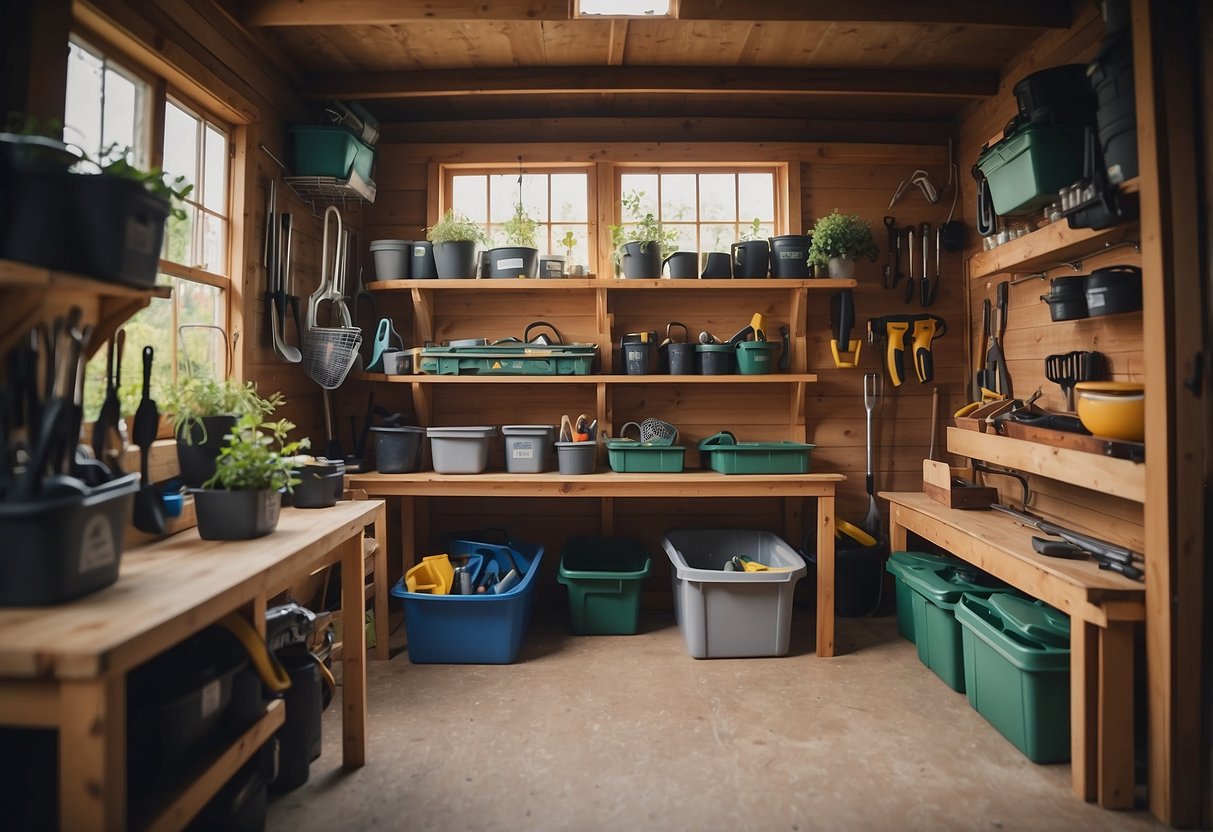
In this article, you’ll find a variety of practical shed organization ideas tailored to different needs. Whether you have a small or large shed, there are plenty of creative solutions to utilize your space efficiently.
1) Install Wall Shelves

Add wall shelves to your garden shed to keep things neat and tidy. Shelves allow you to use vertical space effectively, freeing up the floor for larger items.
Floating shelves are easy to install and can hold planters, tools, or cleaning supplies. Using overhead space with high shelves can store items you don’t use all the time.
Shelving units, whether freestanding or wall-mounted, are great for bulky equipment or larger containers. They provide extra storage and help keep everything in its place. For more ideas, check out these shed shelving tips.
2) Use Magnetic Tool Strips

Magnetic tool strips are a lifesaver for organizing your shed. You can easily attach them to the walls and use them to hold metal tools like hammers, wrenches, or screwdrivers.
These strips keep your tools visible and within reach. Plus, they save space on shelves and prevent tools from getting lost in drawers.
For more ideas on using magnetic strips for storage, check out this guide.
3) Hang Pegboards

Pegboards are an excellent tool for organizing your shed. They are affordable and easy to set up. Mount one on the wall and use different hooks to hang tools and supplies.
With a pegboard, you can arrange items of all sizes efficiently. It helps you find your gardening tools quickly and keeps everything within easy reach.
For more great ideas about using pegboards, check out this guide.
4) Utilize Clear Storage Bins
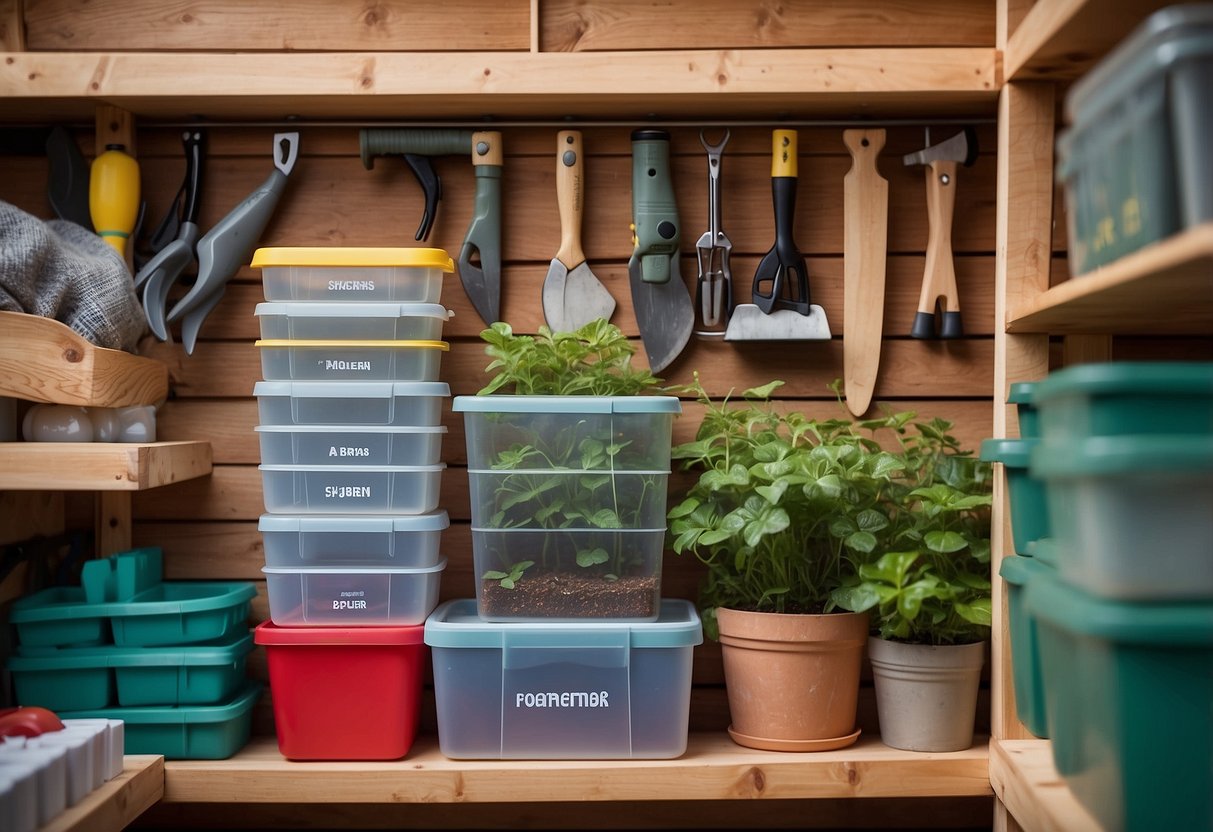
Using clear storage bins in your garden shed helps you see what’s inside without opening each one.
Store smaller items like seed packets, gloves, and hand tools in these bins. You can stack them neatly to save space.
Label each bin to make finding your gardening supplies easier and faster. This keeps your shed tidy and organized.
5) Create a Folding Workbench

A folding workbench can make your shed much more functional. When you’re not using it, you can simply fold it up to save space.
Choose a sturdy material for your workbench to ensure it lasts. Add strong hinges and brackets to secure it in place.
To maximize utility, consider adding some built-in storage compartments beneath the bench. This way, you keep tools and supplies handy without taking up extra space.
6) Add Overhead Storage

Add overhead storage to make the most of your shed’s space.
Use ceiling racks or hooks to hang items like ladders, seasonal decorations, or even bikes. This keeps them out of the way but still accessible.
For smaller items, consider installing a shelf near the ceiling. It’s perfect for bins or boxes that you don’t need to access frequently.
7) Use Stackable Bins
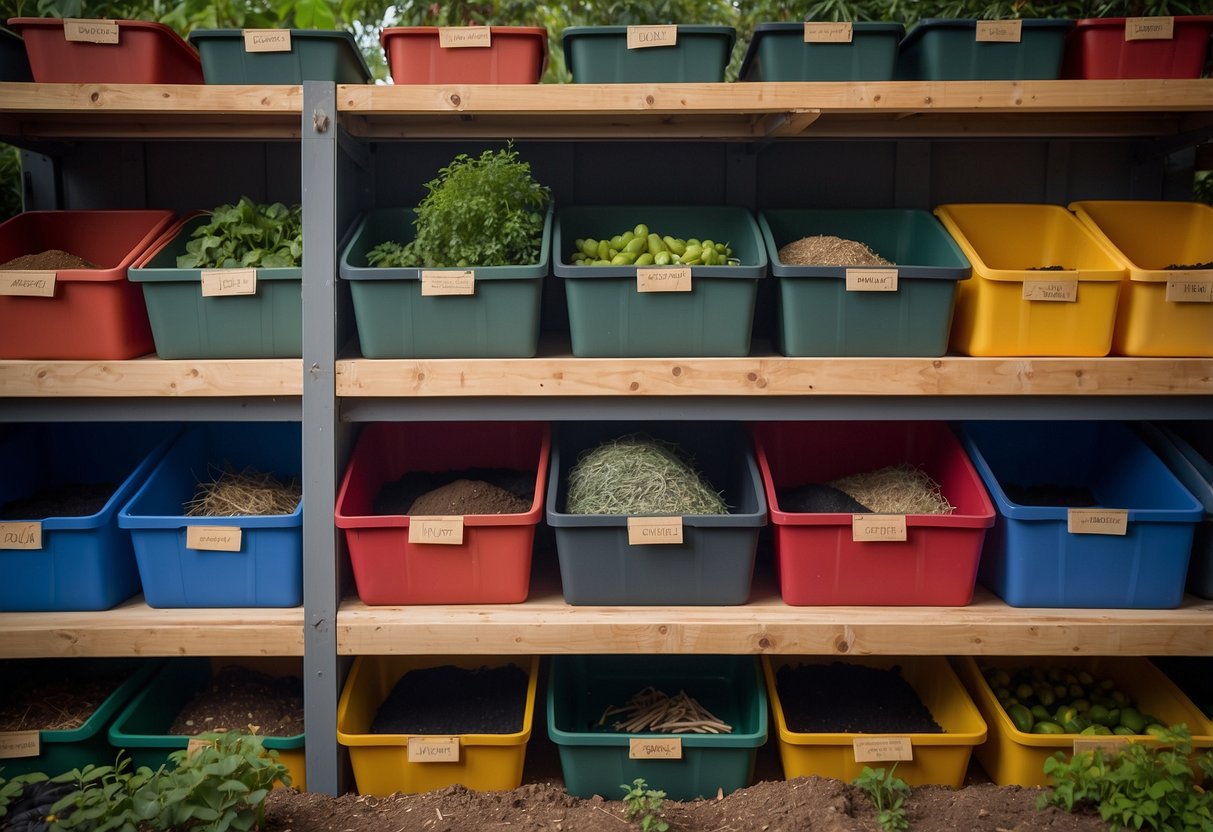
Stackable bins are a game-changer for your garden shed. They help you make the most of limited space by allowing vertical storage. You can store smaller items like seeds, bulbs, and gardening tools in these bins.
Label each bin clearly. This will help you find what you need quickly. Using clear plastic bins can also make it easier to see the contents without opening each one.
Stackable bins are versatile and can fit into any corner or shelf. They also keep your shed clean and organized, making gardening more enjoyable. For more ideas, you can check out these shed organization ideas.
8) Create a Potting Bench

A potting bench is a great addition to your garden shed. It offers a designated space for all your planting tasks.
Repurpose old furniture, like a desk, to serve as your potting bench. This gives new life to old items and adds charm to your shed.
Install sturdy shelves above your bench to keep tools and pots within reach. Using vertical space helps you stay organized.
9) Hang Baskets for Small Items
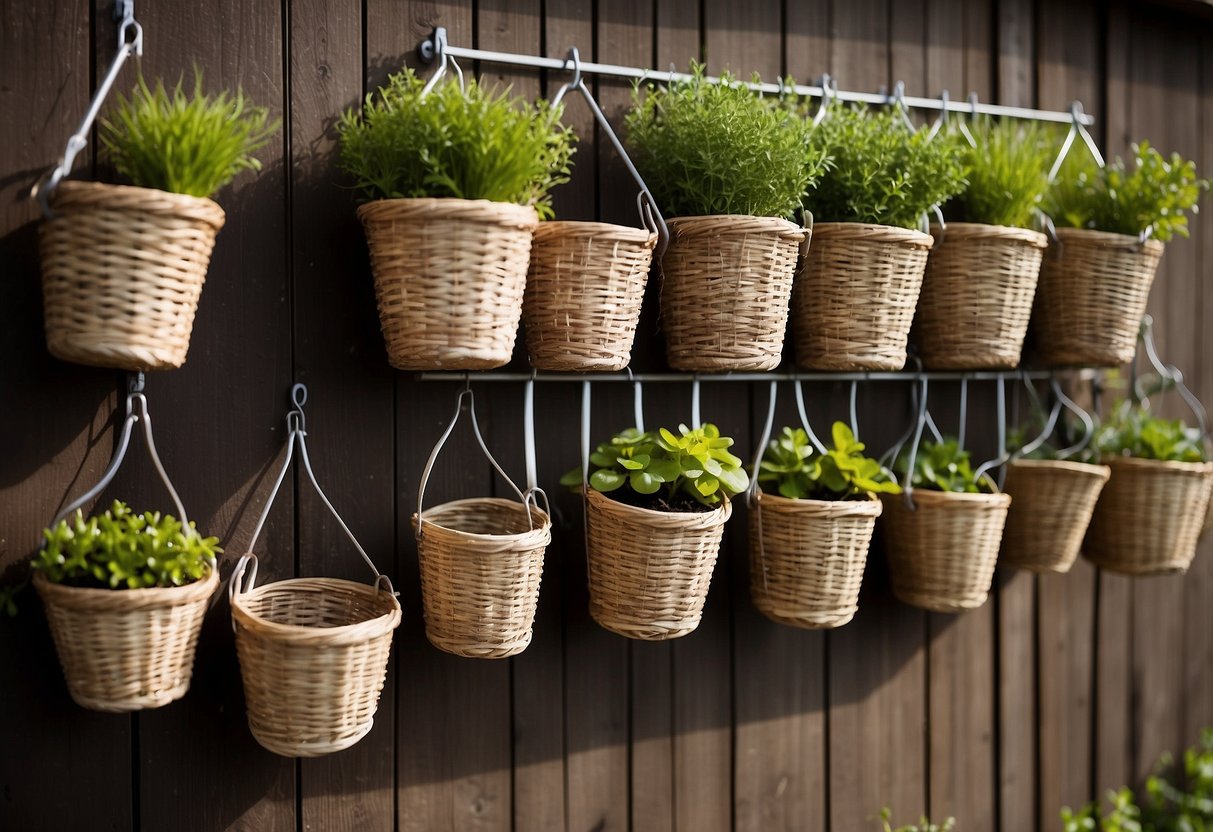
Hanging baskets are perfect for keeping small items organized in your garden shed.
Mount a basket on the wall to store hand tools, garden twine, and plant labels. This can free up space on your shelves and workspaces.
Consider placing a basket below a window or above your workbench for easy access. Baskets help you see and reach everything quickly.
Using wall-mounted baskets is a smart way to utilize every inch of your shed. They make finding and organizing small items simple and efficient.
Learn more about hanging baskets from Better Homes & Gardens.
10) Label Everything

Labeling items in your shed makes finding things a breeze. Use clear labels for drawers, shelves, and containers. You can label seeds, tools, and seasonal decorations to keep everything in its place.
Consider using a label maker for a neat and tidy look. For bigger items like bins, large, readable labels work best. Keeping things labeled helps everyone in your household know where each item belongs.
Benefits of an Organized Garden Shed

Organizing your garden shed comes with several key benefits. It can make your gardening tasks easier and help you maintain your tools better, saving you time and money.
Enhanced Efficiency in Gardening
When everything has its own place, you can find tools quickly. Instead of spending time looking for a spade or pruners, you’ll know exactly where to find them.
This means you can spend more time gardening and less time searching for tools.
Having a neat shed also makes it easier to see what supplies you have on hand. You can take stock of seeds, fertilizers, and other materials at a glance. This way, you’ll avoid buying duplicates or running out of something important.
Consider installing hanging shelves or pegboards to keep tools off the floor and within easy reach. Using small containers for seeds and labels can also be helpful.
A tidy workspace means fewer distractions, helping you stay focused and enjoy your time in the garden.
Prolonging the Lifespan of Tools
An organized shed can extend the life of your gardening tools. Storing tools properly prevents rust and damage. For instance, keeping shovels and rakes off the ground can prevent them from getting wet and rusty.
You can add tool racks or hooks to your shed. Baskets and bins can also hold smaller items like twine and gloves.
By keeping tools in good condition, you won’t have to replace them as often. Regular maintenance like oiling and cleaning becomes easier when you have a designated spot for each tool.
Organizing your shed can help you take better care of your investments, keeping them in use for years to come.
Steps to Plan Your Garden Shed Layout
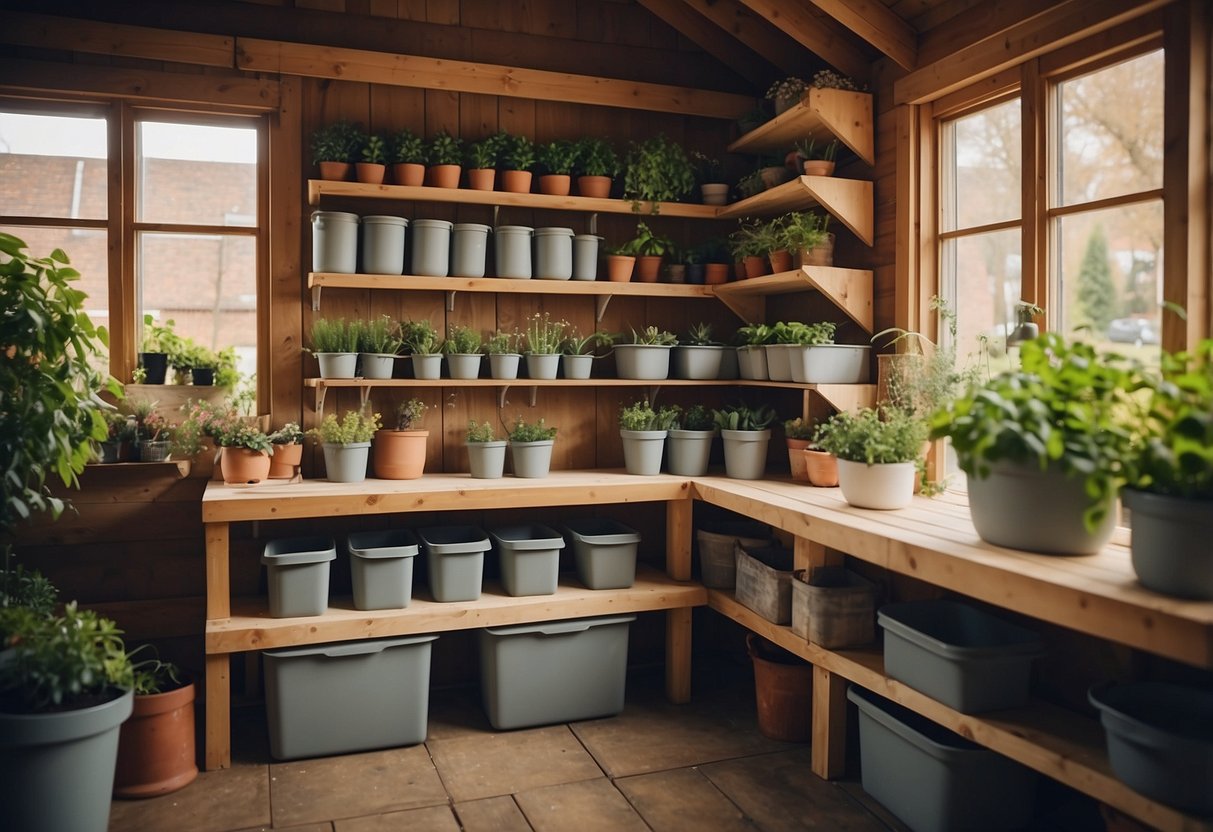
Planning your garden shed layout involves understanding what you need to store and how to organize those items effectively. It requires thoughtful zoning for various categories to make the space functional and tidy.
Assess Your Storage Needs
Start by listing everything you plan to store in your shed. Think about your gardening tools, pots, soil bags, and seeds. This inventory helps you visualize the space requirements.
Next, consider the size and frequency of use. Place tools you use often in easy-to-reach spots. Shelving can help keep items like fertilizers and plant food accessible.
For smaller items like screws and twine, use containers or small drawer units. This keeps tiny objects from getting lost. Hanging racks or pegboards can save floor space and prevent clutter.
Zoning for Different Categories
Divide your shed into zones based on categories. For instance, create a zone for gardening tools and another for potting equipment. This way, everything has a designated spot.
Use wall-mounted baskets to store frequently used items. Mount baskets below windows or above workspaces. You can also use gliding shelves for smaller items, which helps keep them organized and off the floor.
For large items like bikes, consider installing hooks or racks. This maximizes your floor space and keeps pathways clear. Also, think about adding a potting station to manage dirt effectively and make cleanup easier. This ensures that your shed remains functional and neat.
Maintaining Your Organized Garden Shed

Keeping your garden shed organized takes regular effort. It’s crucial to establish routines for cleaning and checking your inventory. This helps maintain order and ensures you always have what you need.
Seasonal Cleaning Routine
With the change of each season, give your shed a thorough cleaning. Start by removing all items from the shed. This allows you to sweep and wipe down shelves, floors, and surfaces.
Spring and fall are great times to do this. During spring, prepare for gardening season by checking for any pests and repairing any winter damage. In fall, tidy up after summer activities and ensure tools are clean and stored properly for winter.
Organize items by use: Keep often-used tools accessible and store seasonal items away. Group similar items together and use bins or containers. Labeling helps to quickly find what you need later.
Inspect structures: Check that shelves, hooks, and brackets are secure. Tighten any loose screws and fix any damage to maintain a safe and functional shed.
Regular Inventory Checks
Conduct regular inventory checks to keep track of your shed’s contents. This prevents clutter and ensures you have essential items on hand.
Monthly checks are ideal. This helps spot missing or low supplies promptly. Take note of items like seeds, fertilizers, and small tools to avoid running out during peak gardening season.
Create a checklist: Write down all your tools and supplies, then update it as you use and replace items. Consider digital tools or apps for tracking inventory if that’s more convenient for you.
Quick clean-up: After using the shed, spend a few minutes tidying up. Put tools back, dispose of trash, and keep workspaces clear. Regular tidying prevents small messes from becoming big ones, keeping your shed efficient and organized.







